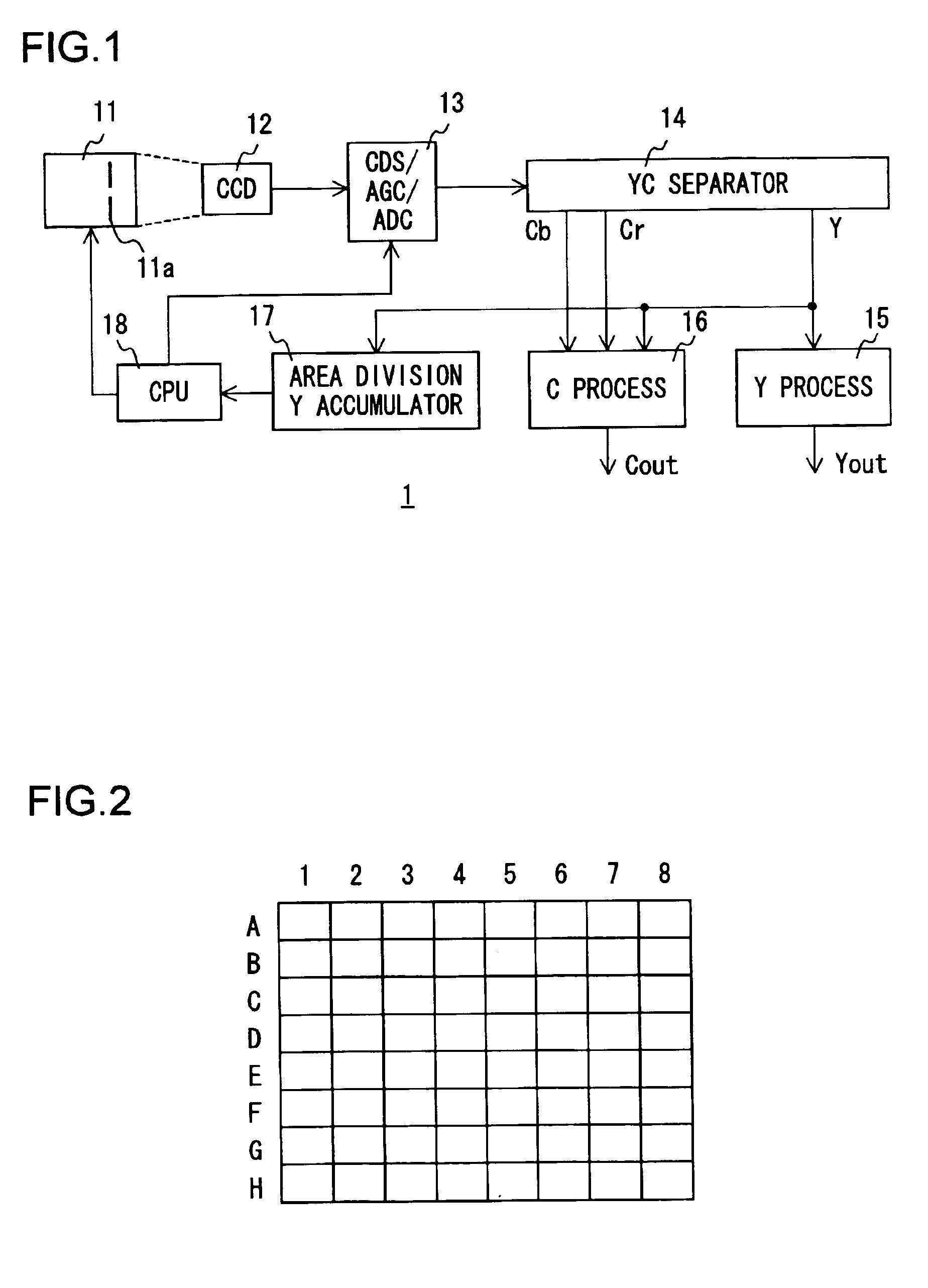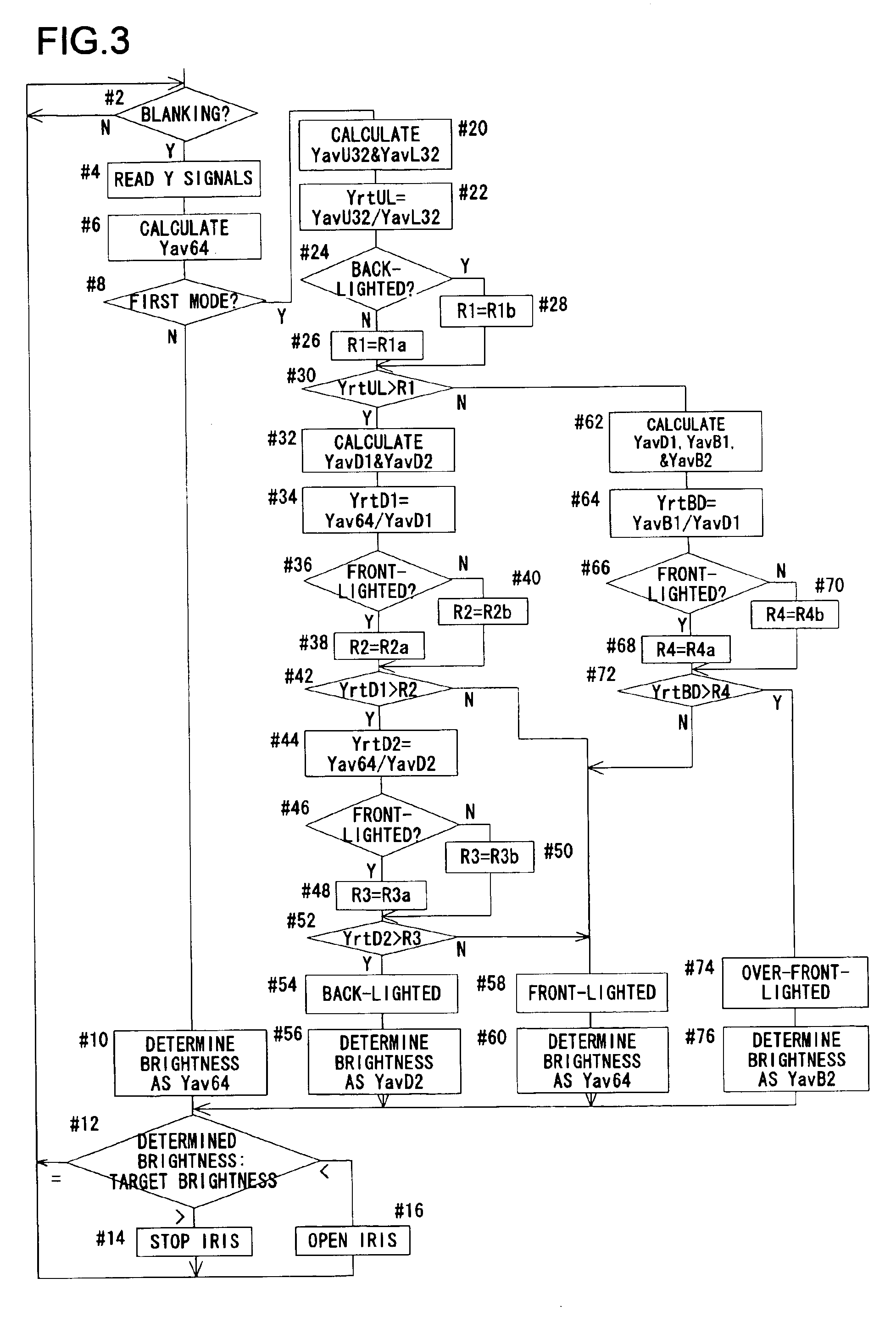Camera that controls image sensor exposure
a technology of image sensor and exposure sensor, applied in the field of cameras, can solve the problems of inability to photograph the subject with appropriate brightness, low brightness of the subject, and dark photographs
- Summary
- Abstract
- Description
- Claims
- Application Information
AI Technical Summary
Benefits of technology
Problems solved by technology
Method used
Image
Examples
Embodiment Construction
[0036]Hereinafter, a video camera embodying the present invention will be described with reference to the drawings. An outline of the configuration of the video camera (hereinafter referred to simply as the “camera” also) of this embodiment is shown in FIG. 1. The camera 1 is provided with a taking lens 11, a CCD 12 serving as an image sensor, an analog processing circuit 13, a YC separator circuit 14, a Y process circuit 15, a C process circuit 16, a Y accumulator circuit 17, and a CPU 18.
[0037]The taking lens 11 images the light from an area to be photographed on the light-sensing surface of the CCD12. The taking lens 11 is provided with an aperture stop (iris) 11a of which the aperture diameter is variable. Thus, by varying the aperture diameter of the aperture stop 11a, it is possible to adjust the exposure of the CCD 12.
[0038]The CCD 12 performs photographing by converting light into electric signals. The pixels of the CCD 12 are each provided with a filter that selectively tra...
PUM
 Login to View More
Login to View More Abstract
Description
Claims
Application Information
 Login to View More
Login to View More - R&D
- Intellectual Property
- Life Sciences
- Materials
- Tech Scout
- Unparalleled Data Quality
- Higher Quality Content
- 60% Fewer Hallucinations
Browse by: Latest US Patents, China's latest patents, Technical Efficacy Thesaurus, Application Domain, Technology Topic, Popular Technical Reports.
© 2025 PatSnap. All rights reserved.Legal|Privacy policy|Modern Slavery Act Transparency Statement|Sitemap|About US| Contact US: help@patsnap.com



